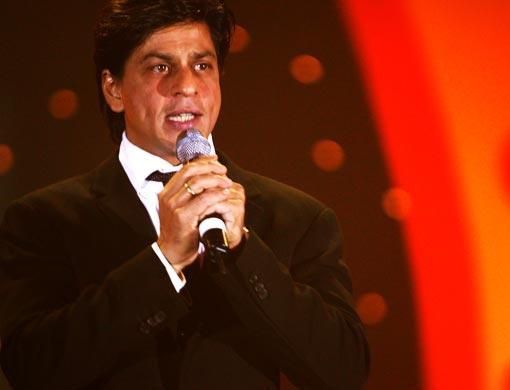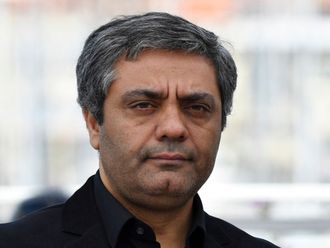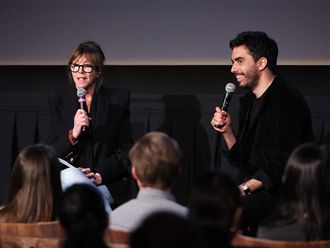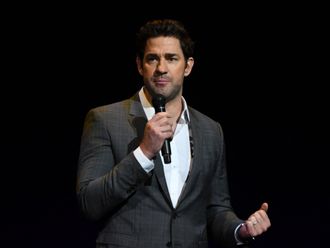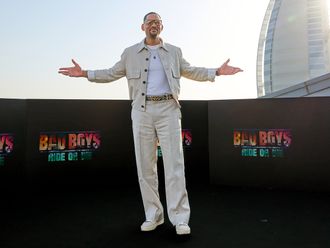Amit Khanna speaks to Suchitra Bapai Chaudhary on the global appeal of the most popular dream factory, Bollywood.
Amit Khanna, a veteran film personality and former executive producer for Navketan films, coined the much bandied-about tag 'Bollywood' ? a popular moniker for the Hindi film industry. Though Amitabh Bachchan is averse to the name, it has acquired international usage.
Khanna set up India's first entertainment conglomerate, the Plus Channel and is responsible for over 3,000 hours of original TV programming and production of 500 music albums. He is a strong promoter of corporatising the film industry and currently heads Reliance Entertainment, one of India's largest entertainment corporates.
He walks down memory lane, stopping by milestones that mark the evolution of Hindi cinema.
***
"Evolution is inevitable and that holds true for the Hindi and the Indian film industry as a whole. The Indian film industry, which is the world's largest, has a history of over a century. In these hundred years, it has evolved from being perceived as a tentative, fickle business run by a couple of eccentrics to a slick, professionally-run corporation (well, almost) in which special effects, new technology, satellite TV and the 'net have revolutionised the distribution and reach of the end product.
"Fifty years ago, if a man or a woman decided to be an actor, families and relatives would disown that individual. The aspiring actor would probably be looking at an unpredictable future, a career dodged by failure, financial ups and downs or worse, penury. Today, Bollywood films are screened in major cinemas in probably every continent, they are entered at all major film festivals and many movies raise seminal issues which are hotly debated both in universities (by academics) and at coffee shops (by cinema buffs).
"A testimony to the popularity of Hindi cinema is the burgeoning multiplexes, the thriving music industry that makes a profit even before a film is released and the increasing number of Hindi film awards instituted by various organisations, film magazines and film associations around the world.
"After the cult success of films like Krrish, we've seen how merchandising of film-related products has added a new marketing dimension as well. We have new distribution strategies that are phenomenally advanced as compared to even the last decade, and finance is flowing in from all directions with corporate houses bankrolling Hindi films, an unprecedented trend. The business of filmmaking is on a roll.
"Nostalgia is a chimera. Often, it makes things look better than they are, or were in this case. Today we tend to look at Hindi films of the 1950s and 1960s and sigh at a perceived loss of cinematic integrity.
"However, I think, except for technological advances and strategic marketing and distribution, as far as the content of films is concerned, nothing much has changed. We are pretty much in the same place we were 50 years ago. There was plagiarism then and there is plagiarism now; there was pettiness, financial haggling, etc, then; ditto now.
"Thematically too, nothing much has changed in Hindi films. All the usual suspects are still lurking about in scripts ? crime, villainy, murder, ghosts, heroes achieving the impossible, heroines managing to do very little, syrupy romances, rich boy-meets-poor-girl and fights to the finish to marry her or vice-versa ... What's changed? If at all anything has changed, it's audience awareness. Today Indian audiences reject poor scripts even as the reach of Hindi films stretches across borders.
What's all the song and dance about?
"The roots of 'the Bollywood film' lie deep in our tradition of mythology that is over 5,000 years old. We draw from our diversity of cultures and India's strong tradition of oral story-telling. Our country has a rich folklore tradition and our films are influenced by the dance and theatre styles of all the states. Be it the Tamasha from Maharashtra, the Bhavai from Gujarat, the Nautanki from North, the Yaksha Gana from Karnataka, the Jatra from West Bengal or Kathakali from Kerala. They all have a strong narrative tradition and the element of spectacle is so riveting that it had a direct impact on our filmmaking. That is one reason why the song-and-dance routine in films became as important a part of story telling as the story itself.
"Also, one of the strongest traditions in Hindi cinema is its respect for socially relevant stories. Even a Western anthropologist would have noticed that about our films. For any element to become popular tradition, it is important it be socially relevant. No matter what the critics say about popular Hindi cinema directors, the fact is that certain kinds of films and television serials are working. They have a strong social message to impart.
"All our films, from the earliest times, held undeniable social appeal and that accounts for their box-office success.
"One of the earliest films was Raja Harishchandra, by the then amateur photographer, Dadasaheb Phalke, who went on to become a respected filmmaker. A feature film, Raja Harishchandra was released in 1913. It was the story of a great king who was willing to sacrifice everything for the cause of truth and honesty.
Crafting a spectacle
"Those were times when directors put in the kind of effort into making a film that is unimaginable today. Veterans like Phalke sahib and other pioneers like him not only sold their property and jewellery to pursue their passion to make movies, they also assembled most of the equipment themselves.
"That marked the beginning of an experimental phase in Hindi cinema.
However, the element of spectacle and the visual treat of watching something on celluloid held such immense appeal to people who had never witnessed something like this before that it set off a trend of mythology films. These films even travelled around the country like road shows, being screened in 'tent' cinemas.
"By the end of the 1920s, it was evident that filmmaking was big business and we would soon be a nation with a thriving film industry.
"The great Indian film juggernaut was set to roll and from an era of silent movies, we moved to talkies which led to the era of stalwarts in the field of direction, scriptwriting and acting. Some of course drew their inspiration from Hollywood. We had action heroines in an era where women hardly stepped out of their homes. Fearless Nadia riding horses and jumping off mountains ... the audience was star-struck, fascinated and every movie became an event to look forward to.
"Actors began working for specific studios or companies such as Bombay Talkies, Wadia Movietone and the like around which a whole industry of actors both big and small, lyricists, music directors, singers, etc, thrived.
"While there were people who labelled the movie industry a breeding ground for evil habits, it was evident that the magic of films was working on people. As more movies got made, the more the people flocked to see them.
And more people began to seek a career in the movies.
"Slowly, it was beginning to be known as the film industry.
Seeking 'inspiration'
"But Hollywood still held sway over our minds and most of the iconic stars of that era (1950s and 60s) such as Dev Anand, Raj Kapoor, Dilip Kumar and Shammi Kapoor were fashioning themselves after Western heroes right down to sporting similar hairstyles and mannerisms.
"The film industry was flooded with actors and directors from all parts of the country. Hindi cinema began absorbing influences from regional cinema.
We had veteran Bengali filmmaker Bimal Roy bringing in the richness of Bengali literature, showcasing middle-class values; we had a progressive V. Shantaram from Maharashtra aggressively pushing for progress via themes depicting women's emancipation and adult literacy. We had L.V. Prasad and A.V. Mayyappan and B. Nagi Reddy (from the South) in the later decades concentrating on family values and the importance of middle-class aspirations.
"While Hindi cinema had its fair share of beautiful heroines from the North, an influx of South Indian heroines began very early. From the classically beautiful Waheeda Rehman, then Padmini and Raagini, Sharada, Vyjayanthimala to 'dream girl' Hema Malini, Sridevi, Jayaprada ... You cannot pinpoint a specific period when this transition took place. It had a constant presence.
"The 1950-60s saw the blossoming of romantic films; they were sure-fire hits and the Hindi film industry saw the rise of many heroes such as Dharmendra, Rajendra Kumar, Shashi Kapoor, Shammi Kapoor and heroines such as Madhubala, Nargis, Sadhana and Vyjayanthimala, just to name a few.
"It was an industry fraught with the same elements of divisiveness as today ? jealous competition, damaging rumours, plagiarism ... Today we blame a music director like Anu Malik for copying tunes from foreign music but if you were to listen to a song from Pyaasa: Jaane woh kaise log the jinke pyar ko pyar mila and then listen to our national anthem's first line, you'll notice the similarities. Who doesn't acknowledge that the song from Mr Ya Mrs, Itna na mujshe tu pyaar badha, is a complete lift from a Mozart symphony? Many of the songs of RK films had music copied from Western movies. We tend to overly criticise the current crop of Hindi film music directors but this issue of plagiarism is not new.
"Perhaps A. R. Rahman is the only original and talented music director of the present age. But let's not underestimate the talent of the current generation. Technology has revolutionised the way music is arranged and recorded. Even the manner in which you play instruments has changed. Each generation has its share of genuines.
"Music has been central to the soul of our films. Even directors of the stature of Satyajit Ray, Shyam Benegal, Aravindam and Mrinal Sen realised that music was an integral part of the craft of story-telling. We had spectacular music in films like Charulata, Jalsaghar, Junoon, Manthan, etc.
"It is not the vocabulary of films that has evolved but it is the syntax that has changed.
"In the 1930s, films were usually made on stories written by literary giants of those days such as Munshi Premchand, Sarat Chandra, Bhagwati Charan Verma. Later on, be it a Bimal Roy, Raj Kapoor, Inder Raj Anand or someone like K. A. Abbas, they were all influenced by the best literary minds of their times.
"Now we have films being made on contemporary literature of our times. Of course, there will always be the 'DVD directors' who will watch a foreign film and then adapt it to suit Hindi film audiences' tastes.
"I think it is the media that portrays the business of filmmaking as simplistic, even as our lives get more complicated. It is not as though directors in the decades gone by were original in their thinking or approach; we just want to see them that way.
"Romance, action, common man pitted against the system, crime and punishment ? these have been universal themes at all times. They do not belong to one age. Only the expression of it (a particular theme) undergoes a change.
A paradigm shift
"By the 1970s, other social issues such as poverty, unemployment, the wars India had fought, inflation ... they became contemporary material for movie makers. Television was the new entertainment medium in town and audiences abandoned cinema halls as TV took over their lives along with the rise of the video technology.
"We did hit a lean patch in the late 1970s and the early '80s. But I would disagree with anyone who says this phase was marked by a paucity of talent compared to the '40s and '50s. Hindi cinema had a new crop of directors like Prakash Mehra, Manmohan Desai, Subhash Ghai and Yash Chopra who created an important body of work. However, critics were harsh, generalisations were made about them in a post-Emergency era as people were rebelling against intellectual and physical repression. This was reflected in the stories. Writers like Salim-Javed marked a generational change and brought in a certain amount of freshness into films with their own version of the anti-hero, the angry young man who fought a corrupt establishment with his own rules.
"Amitabh Bachchan, until then a struggler with unconventional looks and height, fitted the bill perfectly.
"Ramesh Sippy's Sholay attained a cult status when it was released in 1975. New technology, the 70 mm wide screen, the special effects in action sequences, gave this film an iconic status. It's a milestone in its genre and few films have been able to reach it.
"The period after that was marked by experimentation and as many film stars found superstardom, directors began spending generously on budgets.
"If we had the likes of Shyam Benegal experimenting with cinema, we had a Mahesh Bhatt experimenting with story-telling technique in films like Saaransh. Yash Chopra brought in his own brand of escapism with lush Swiss locales and chiffon- and pearl-clad heroines looking more delicious than fondue. The crop of movies was as irresistible to Indian audiences as Swiss chocolate.
"But as technology changed, television switched from being the insipid black-and-white sedative experience to a full-bodied colour jolt.
Satellite television entered the Indian market around the 1990s and the sensibilities of the audiences evolved as well. Television was by now the accepted and recognised medium that did not threaten to displace films. A new breed of directors like Sooraj Barjatya, Karan Johar, Aditya Chopra reworked the themes and made films that suddenly had people flocking to the cinema halls.
"This was also the time Hindi cinema began wooing NRIs. The mechanics of distribution and marketing did the trick. Films like Dilwale Dulhaniya le Jayenge, Maine Pyar Kiya, Dil To Paagal Hai achieved cult status, both in India and abroad, as they upheld familiar themes of familial love, a love for the homeland and tradition.
It's different
"Films have always been a medium of expressing the angst of the filmmaker. If Guru Dutt did that decades ago with Kagaz Ke Phool and Pyaasa, small-budget film makers with big ideas such as Nagesh Kukunoor are doing the same today. That is why you find freshness in films like Joggers' Park, Mixed Doubles, Dor and Bheja Fry.
"There has been a huge shift of late in the way people look at India and that is why the film industry is basking in its new-found status. But we are too outward-looking. We tend to judge our worth by what the world says about our film industry. It is time we look inwards.
"The new challenge is the internet. It has revolutionised the power and reach of technology with broadband connectivity. Look at the magic of YouTube and the immense potential it has unleashed on the web. Earlier, a film by Raj Kapoor or Dev Anand got released in about 100 countries, now we have close to 130 countries watching Indian films. The South Asian diaspora has a very large number of people, and then there are the SAARC countries. We now have close to 50 million people outside, a captive audience of Indians residing abroad who have a choice, the purchasing power and an opinion that cannot be ignored.
"The Gulf market has changed over the years. The strategy of distribution has changed as well. Today film piracy does not make us lose half our revenues ? it is limited to about 25 per cent and we have learnt to live with it.
"Today new revenue streams have been created to prevent the depreciation of earlier film assets. So we have a new version of a colour touched, digitally-enhanced Mughal-e-Azam doing brisk business. Last year, the RK brothers sold the RK library, providing telecast rights of all his films for several million rupees. Raj Kapoor must have not made more than a couple of hundred thousand on these films when alive!
"Bollywood has acquired a respectable status and there are attempts at a serious study of Indian Cinema. Harvard University has a course on Indian films and one can see a fusion of all medium of communications. We have film magazines, blogs, chatroom talks, newspapers, new channels and other sections of the medium where films find an interactive audience. This is another marker of evolution, no less important than other markers whatever be the decade or era. The talent emerging today is richer, more diverse and has a better understanding of the technical issues of the medium.
"This era is marked by professionalism. There are systems and procedures in place. Marketing is streamlined and the revenues are climbing off the charts!
"I think we are living in very exciting times."
- In a career spanning over 30 years, Amit Khanna has written over 400 songs, produced and directed a few critically acclaimed movies and has contributed to various publications.


